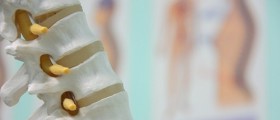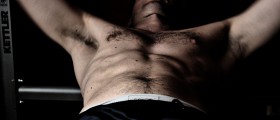Hey im 15 and i have a chest bone that sticks out quite far is this normal???
Loading...
Hey there,
During puberty your body performs a lot of physical and psychological changes. The protruding sternum could be just a part of it, but also it could be related to deformities of the chest wall which can be an isolated condition or may have associated internal abnormalities.
To establish an accurate diagnosis to clarify the situation you’ll need to visit pediatrician or rheumatologist. Before you ask for a pediatrician, consult first with your family doctor.
The examples of underlying conditions in which the chest protrudes include Marfan's syndrome and Ehlers-Danlos syndrome. Even if internal structures are fine, surgical correction is a consideration to alleviate physical and psychological stress. Your doctor can direct you in this matter.
Pectus Excavatum and Pectus Carinatum
Pectus excavatum better known as funnel chest, and pectus carinatum also known as pigeon breast, are congenital anomalies of the anterior chest wall. The excavatum defect is characterized by a deep depression of the sternum, usually involving the lower half or two thirds of the sternum, with the most recessed or deepest area at the junction of the chest and the abdomen.
The pectus excavatum defect is found in somewhere between 1 in every 500-1000 children. It does occur in families and thus, is inherited in many instances. Other problems, especially in the muscle and skeletal system, also may accompany this defect.
The symptoms of these defects are not really apparent until the child participates in athletic or high stress activities. The moderately to very severe defects, where the heart is displaced to the left of the sternum or the midline, may cause a murmur and this murmur is really due to the pressure on the system causing rough instead of smooth flow. The electrocardiogram also can demonstrate strain on the right side of the heart. The expansion of the lungs during breathing or exercise which is important to maintaining normal respiratory function is confined because the chest wall cannot expand. Thus, more intensive and rapid respiratory rate is necessary. More energy is thus utilized for breathing and contributes to fatigue, in contrast to the normal individual.
Surrgical treatment is needed to correct these conditions.
MARFAN'S SYNDROME is a disorder of connective tissue resulting in ocular, skeletal, and cardiovascular abnormalities. It’s an implication from mutations in the gene coding for an extracellular matrix protein called fibrillin-1. An abnormality of the aortic media is the principal structural defect, the histologic changes resembling those of Erdheim cystic medial necrosis. The marfanoid hypermobility syndrome and congenital contractual arachnodactyly are uncommon variants.
Some of the symptoms are mostly eformity of the sternum - outward displacement (pectus carinatum) or inward displacement (pectus excavatum). Hyperextensibility of joints, backward curvature of the legs at the knees (genu recurvatum), flatfeet, and kyphoscoliosis occur often. Hernias are common. Subcutaneous fat usually is sparse. The palate is often high-arched.
It’s mostly present by girls and for very tall girls, inducing precocious puberty by age 10 with estrogens and progesterone may reduce ultimate height. Beta Blockers reduce the abruptness of ventricular ejection and reduce progression of aortic root dilation and risk of dissection. Prophylactic surgery is offered to persons with increasing aortic diameters beyond 5 cm. These interventions can prolong life expectancy.
I hope you cannot identify yourself with these 2 abnormalities above.
Talk to your parents about this issue and consult with your doc, because we cannot know how large is your sternum protruded.
Take care ...
During puberty your body performs a lot of physical and psychological changes. The protruding sternum could be just a part of it, but also it could be related to deformities of the chest wall which can be an isolated condition or may have associated internal abnormalities.
To establish an accurate diagnosis to clarify the situation you’ll need to visit pediatrician or rheumatologist. Before you ask for a pediatrician, consult first with your family doctor.
The examples of underlying conditions in which the chest protrudes include Marfan's syndrome and Ehlers-Danlos syndrome. Even if internal structures are fine, surgical correction is a consideration to alleviate physical and psychological stress. Your doctor can direct you in this matter.
Pectus Excavatum and Pectus Carinatum
Pectus excavatum better known as funnel chest, and pectus carinatum also known as pigeon breast, are congenital anomalies of the anterior chest wall. The excavatum defect is characterized by a deep depression of the sternum, usually involving the lower half or two thirds of the sternum, with the most recessed or deepest area at the junction of the chest and the abdomen.
The pectus excavatum defect is found in somewhere between 1 in every 500-1000 children. It does occur in families and thus, is inherited in many instances. Other problems, especially in the muscle and skeletal system, also may accompany this defect.
The symptoms of these defects are not really apparent until the child participates in athletic or high stress activities. The moderately to very severe defects, where the heart is displaced to the left of the sternum or the midline, may cause a murmur and this murmur is really due to the pressure on the system causing rough instead of smooth flow. The electrocardiogram also can demonstrate strain on the right side of the heart. The expansion of the lungs during breathing or exercise which is important to maintaining normal respiratory function is confined because the chest wall cannot expand. Thus, more intensive and rapid respiratory rate is necessary. More energy is thus utilized for breathing and contributes to fatigue, in contrast to the normal individual.
Surrgical treatment is needed to correct these conditions.
MARFAN'S SYNDROME is a disorder of connective tissue resulting in ocular, skeletal, and cardiovascular abnormalities. It’s an implication from mutations in the gene coding for an extracellular matrix protein called fibrillin-1. An abnormality of the aortic media is the principal structural defect, the histologic changes resembling those of Erdheim cystic medial necrosis. The marfanoid hypermobility syndrome and congenital contractual arachnodactyly are uncommon variants.
Some of the symptoms are mostly eformity of the sternum - outward displacement (pectus carinatum) or inward displacement (pectus excavatum). Hyperextensibility of joints, backward curvature of the legs at the knees (genu recurvatum), flatfeet, and kyphoscoliosis occur often. Hernias are common. Subcutaneous fat usually is sparse. The palate is often high-arched.
It’s mostly present by girls and for very tall girls, inducing precocious puberty by age 10 with estrogens and progesterone may reduce ultimate height. Beta Blockers reduce the abruptness of ventricular ejection and reduce progression of aortic root dilation and risk of dissection. Prophylactic surgery is offered to persons with increasing aortic diameters beyond 5 cm. These interventions can prolong life expectancy.
I hope you cannot identify yourself with these 2 abnormalities above.
Talk to your parents about this issue and consult with your doc, because we cannot know how large is your sternum protruded.
Take care ...
Loading...
Hi, I had the very same problem when I was an adolescent. I grew up in the '70s and did not have the internet as a resource. I am now 44 and show no signs of the protruding chest that I grew up with. What I do have is a heart murmur, which after reading the previous post, I believe is related to the condition.
My 17 year old son inheirted the same condition from me and has a protruding sternum which sticks out approximat 3". In trying to help him understand the problem, I have come here looking for answers.
My protruding chest went away, either through lifting weight (baling hay) or other natural circumstance. I do not remember exactly when the problem went away, I think approximatly when I was 17.
My 17 year old son inheirted the same condition from me and has a protruding sternum which sticks out approximat 3". In trying to help him understand the problem, I have come here looking for answers.
My protruding chest went away, either through lifting weight (baling hay) or other natural circumstance. I do not remember exactly when the problem went away, I think approximatly when I was 17.
Loading...
My son discovered what appears to be a protruding sternum 2 days ago. He's 13 and growing very quickly at the moment (he's 5ft 10"). Both the doctor and hospital/X-ray could give us no answer. I am obviously worried. Am interested to hear from anyone else with this problem. He been working his upper body a lot recently with press ups.
Loading...
hi i am 15 years old and i have a protruding chest bone as well....your son may come across hearing things such as "uni boob" but i ave met 2 other people the same age in my grade who have the problem and one is ver short (groth problem) and one is very tall like myself...i think that people who go through puberty too fast and grow to fast end up with such diformites ..you could say....nothing but surgery can help your son trust me...and you dont want to have surgery yet because hes not yet done growing obviously....so the only option left is time..ive learned to ignore people who comment on my weird chest and look at it strangely jsut tell your son quite frankly he will have to suck it up like the rest of us with this rare "condition" and there is nothing he can do....but dont let him get too self concious about it...taking him to the doctor and getting him exrays isnt the best thing to do because your shhowing him thats its not normal and that somehting is wrong with him by taking him to the doctor..now im no psychologist but i do know what it feels like to be in your sons position...all he can do it wait it out...and when he turns about 14 start lifting weight with his high school it helps dramatically..hope this helps out and i wish your son good luck for a next few years of getting a hard time by his friends...just remember it starts at home with your positive encouragement by letting him know that its not abnormal that every one is different and that it will change as he ages
Loading...
http://groups.msn.com/ThePectusListserve
Contact me - Trainer Joe my company produces a brace and exercise program for pectus carinatum - protruding sternum. It safely corrects pectus.
Trainer Joe
Pectus Services
800-505-9408
PectusTrainer@aol.com
Contact me - Trainer Joe my company produces a brace and exercise program for pectus carinatum - protruding sternum. It safely corrects pectus.
Trainer Joe
Pectus Services
800-505-9408
PectusTrainer@aol.com
Loading...
http://groups.msn.com/ThePectusListserve
Contact me - Trainer Joe my company produces a brace and exercise program for pectus carinatum - protruding sternum. It safely improves the look and protrusion of the pectus withough surgery.
Trainer Joe
Pectus Services
800-505-9408
PectusTrainer@aol.com
Contact me - Trainer Joe my company produces a brace and exercise program for pectus carinatum - protruding sternum. It safely improves the look and protrusion of the pectus withough surgery.
Trainer Joe
Pectus Services
800-505-9408
PectusTrainer@aol.com
Loading...
I was born with a protruding sternum, it is not off-center and has a slight curviture at the tip towards my left side, length of the cartilage is roughly 1 3/4 inches. I only provide these details so as not to mislead people with differing physical characteristics, and would like to state this following information is my personal speculation. You should always consult with your doctor for any conclusive medical information.
Observation one: My sternum was able to grow 'protruded' due to a loose tendon. This tendon runs from the spine to the sternum, and gives the support to your internal organs (heart, lungs..).
Observation two: I believe this 'loose tendon' has allowed my heart to grow a bit larger, as well as my lungs. (The extra space for growth from lack of restraint / support of the tendon) From what I have seen from personal experience my lung capacity is larger than average, and my cardiovascular is a bit stronger. I do have a slight murmur when relaxed, but it is not exceptional nor irregular compared to most peoples' heart irregularities. Naturally, there are many contributing factors to these effects, both genetic and habitual, so again this is not an absolute.
Observation three: I fully believe this is a genetic trait, as my father had a protruding sternum, as did my grandfather. Neither of my brother's nor sister has it, me being the youngest of them. From personal experience I have noticed the protruding sternum to be most common in people of Scotts / Irish origins.
Observation one: My sternum was able to grow 'protruded' due to a loose tendon. This tendon runs from the spine to the sternum, and gives the support to your internal organs (heart, lungs..).
Observation two: I believe this 'loose tendon' has allowed my heart to grow a bit larger, as well as my lungs. (The extra space for growth from lack of restraint / support of the tendon) From what I have seen from personal experience my lung capacity is larger than average, and my cardiovascular is a bit stronger. I do have a slight murmur when relaxed, but it is not exceptional nor irregular compared to most peoples' heart irregularities. Naturally, there are many contributing factors to these effects, both genetic and habitual, so again this is not an absolute.
Observation three: I fully believe this is a genetic trait, as my father had a protruding sternum, as did my grandfather. Neither of my brother's nor sister has it, me being the youngest of them. From personal experience I have noticed the protruding sternum to be most common in people of Scotts / Irish origins.
Loading...
Um Ooook I've Noticed Something Extremely odd.
Its Seems That People Get This At Around 15!! I'm 15 and everyone else i heard about this is 15, and other people say it goes away at about 17 or 18 but i dunno.
I Have The Exact Same Thing (pectus carinatum) Pigeon Chest.
I have Not Seen Another Person With This But Appartently Its Not that rare 1 in 500-1000 kids get this. It Sucks But You Can Get A Brace To Help Fix This Problem. I just Hope Everything Works Out Because Its Really Annoying!
Its Seems That People Get This At Around 15!! I'm 15 and everyone else i heard about this is 15, and other people say it goes away at about 17 or 18 but i dunno.
I Have The Exact Same Thing (pectus carinatum) Pigeon Chest.
I have Not Seen Another Person With This But Appartently Its Not that rare 1 in 500-1000 kids get this. It Sucks But You Can Get A Brace To Help Fix This Problem. I just Hope Everything Works Out Because Its Really Annoying!
Loading...
i noticed in daniel radcliff's poster for his stage play where he is pictured shirtless, his sternum protrudes a bit.
Loading...
Protruding breastbones are often nothing to worry about, especially during adolescence. However, for the few of you that just posted, noting that you are unusually tall, you may want to ask your doctor about marfan syndrome. A list of symptoms can be found at:
http://www.marfan.org/nmf/GetContentRequestHandler.do?menu_item_id=4
Now it could very well be that you are just going through puberty, and growing the way i did (9 inches in one year). However, my parents had the same concerns, both of whom are doctors and it seems like the mixture of unusual height and protruding breastbone may have some important connection.
http://www.marfan.org/nmf/GetContentRequestHandler.do?menu_item_id=4
Now it could very well be that you are just going through puberty, and growing the way i did (9 inches in one year). However, my parents had the same concerns, both of whom are doctors and it seems like the mixture of unusual height and protruding breastbone may have some important connection.
Loading...
I am 15 year old and also have this "Pigeon" chest thing. When i have found is that it is damaging me mentally rather than pyhsically. I find that I am constantly trying to hide my chest and i never go swimming in public which is obviously not good. It cannot be doing me any good to be worrying about it every day, however i was just wondering what I can do about it. Thanks!
Loading...
okay im 15 and i have this same thing that everyone else has at 15!. i just got a weird feeling that it goes away at around the age of 17. my dad sais that his dad had it but it went away at around seventeen but idk. does anyone know any sites to get a brace to fix this abnormality?
Loading...
Hello everybody I just wanted to say I have this same condition too with the protruding bone in my chest. I noticed it around when i was 14-15 and it didn't cause me too much trouble. I feel pain sometimes in the morning while breathing in the particular area that is protruding after sleeping on my side for the night. It is kind of bothersome to have I was wondering if this could be serious in the future and was also wondering if surgery is the only way to prevent the serious issues from happening. can anybody help>
Loading...

















